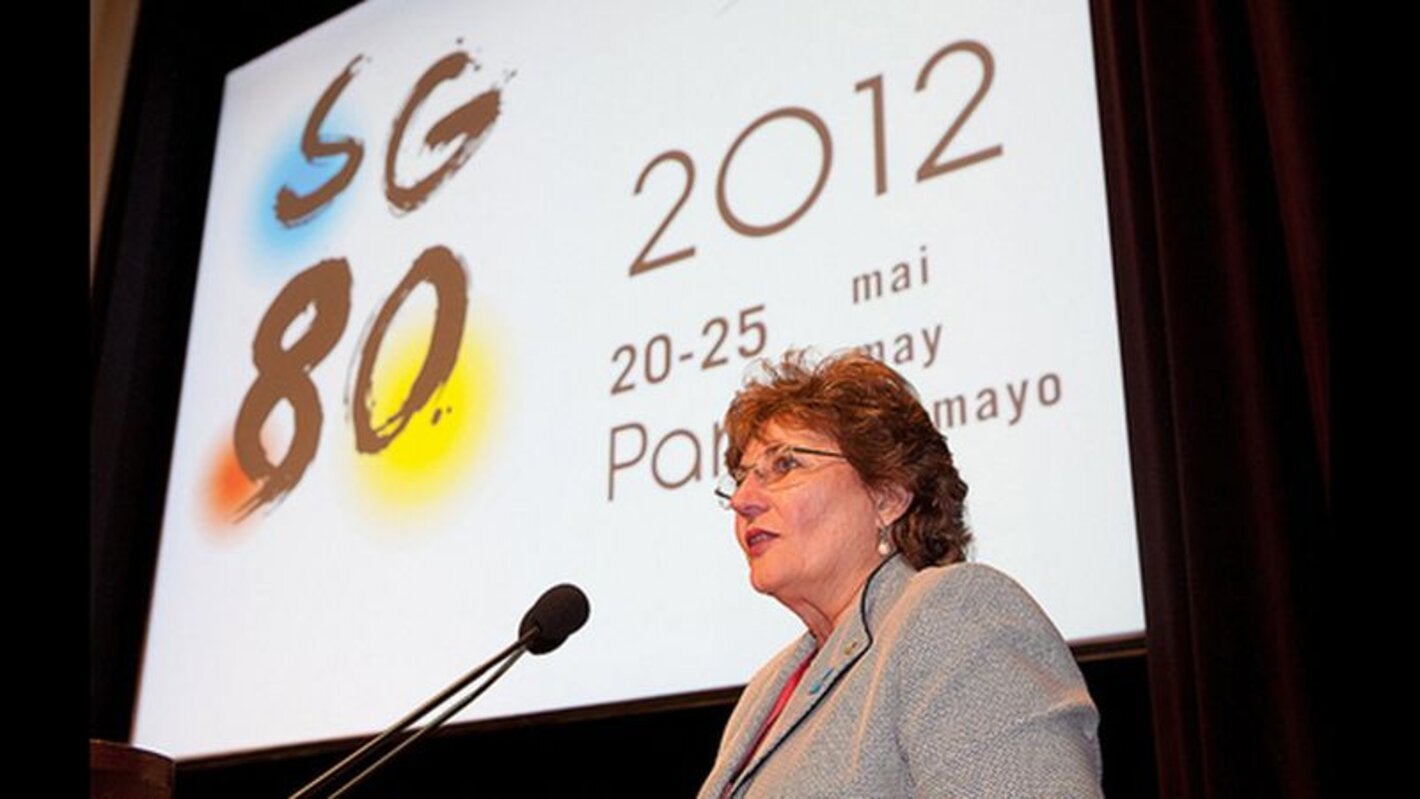
Paris, France, 20 May 2012 (PAHO/WHO) - Efforts to combat foot-and-mouth disease in the Americas have increased beef production, reduced or eliminated sanitary barriers, consolidated veterinary services, and enhanced economic benefits for the region, yet challenges remain. This was the message of Dr. Mirta Roses Periago, Director of the Pan American Health Organization (PAHO), speaking at the opening of the World Assembly of Delegates of the World Organization for Animal Health (OIE), on 20 May, in Paris, France.
Dr. Bernard Vallat, Director-General of the OIE invited Dr. Roses to share with the delegates of the OIE's 178 Member States PAHO's experience in improving food and nutrition security, and especially in technical cooperation to eradicate foot-and-mouth disease in the hemisphere. Dr. Roses underlined the important contribution of animals and animal products to public health, the relevance of foot-and-mouth disease in the countries of the Americas, and PAHO's 60 years of work with public and private veterinary services through the Pan American Center for Foot-and-Mouth Disease Center (PANAFTOSA).
The challenges ahead, according to Dr. Roses Periago, include eradication where this has not yet been achieved; strengthening veterinary services; striking a balance between primary production and processing of foods of animal origin and the negative impact of industrialized production on human health and the environment; and linking efforts to improve animal health and food production with strategies to fight child chronic malnutrition.
"Programs to fight foot-and-mouth disease have contributed significantly to food security, especially for the human population of our hemisphere, but also for the world's population, since our countries are the main suppliers of foods of animal origin in the world," asserted Dr. Roses Periago. She added that the region is embarked on an effort to eradicate child chronic malnutrition, together with other United Nations agencies, and must therefore tackle the challenges posed by foot-and-mouth disease.
Noting the improved health conditions achieved over the years, Dr. Roses drew attention to "the important contribution of technical personnel from PANAFTOSA and from the countries, working together for innovation and technological developments, greater availability of diagnostic tools, and new approaches to epidemiological analysis." She added that PAHO has been working for over 60 years in the control of foot-and-mouth disease in the Americas and highlighted the creation of PANAFTOSA based on a decision made by the countries of the region in the context of the Organization of American States.
In her address to the OIE, the Director of PAHO described the region's main contributions to the control of foot-and-mouth disease:
- Beef production increased due to better production methods, boosting the supply of animal protein available to meet internal demand in the Americas and to generate an exportable surplus.
- Sanitary barriers have been reduced and in some cases eliminated in recognition of improved herd health: over 85% of the 350 million head of cattle in South America have been declared free of foot-and-mouth disease with or without vaccination. This has boosted export levels five times over in the past ten years.
- Veterinary services have been consolidated through their work on foot-and-mouth disease and this has equipped them to move into other areas of animal health that pose a risk to public health, such as zoonoses and food safety, among others.
- Countries with an exportable surplus have reaped growing economic benefits.
Dr. Roses Periago noted as a persistent challenge in the region that eradication is still incomplete. The virus continues to circulate endemically in certain areas, jeopardizing the investment that the countries have made to counter this disease, which amounted to nearly US$ 1.3 billion in 2011. "Collective action is required, since this is a regional, rather than a local problem," she stressed.
She also mentioned the need to extend the benefits of the livestock business to family farming and small and medium-sized landowners, as well as to strengthen veterinary services "as a vital tool for ensuring the quality and sustainability of health programs." This entails equipping these services with the professional, technical, and resources structure they need to tackle the challenges of disease prevention, she explained.
According to Dr. Roses Periago, a fourth challenge is to strike a balance between primary production and processing of animal foods in the context of nutrition and food security "and the negative impact of increasingly industrialized production on human health and environmental degradation. She indicated that this requires coordination among producers, the production chain, and consumers in a multisectoral effort.
Finally, she emphasized the need to link animal health and food production to strategies to combat child chronic malnutrition and to the achievement of the first Millennium Development Goal (eradicate extreme poverty and hunger) in the most vulnerable populations of the region.
The OIE is the intergovernmental organization responsible for improving animal health in the world. The need to fight animal diseases at the global level led to the creation of the International Office of Epizootics (Office International des Epizooties) through an international agreement signed on January 25, 1924. In May 2003, the Office became the World Organisation for Animal Health, but kept its historical French acronym, OIE.
The Pan American Foot-and-Mouth Disease Center (PANAFTOSA) is a scientific center of the Pan American Health Organization/World Health Organization (PAHO/WHO) which, since 1951, has mounted a significant effort for the control and eradication of foot-and-mouth disease. Technical cooperation in zoonoses became one of its mandates in 1997 and food safety was added as an area of action in 2007. PANAFTOSA-PAHO/WHO provides technical cooperation to all PAHO Member Countries in the Americas in order to improve the health conditions of the population and promote the development of the countries.



